
![]() Ginika Oluchi okekehealthcareMarch 31, 2021
Ginika Oluchi okekehealthcareMarch 31, 2021
Medically reviewed by Dr Halima Al-Mujtaba
In simple terms, a stroke is best described as a ‘brain attack’ which means that it can safely be called a medical emergency.
Just like in a heart attack, stroke happens when there is a sudden rapid attack of the cerebral part of the brain denying it the blood supply and oxygen it needs to work. This interruption causes the brain tissues to begin to die in a matter of minutes.
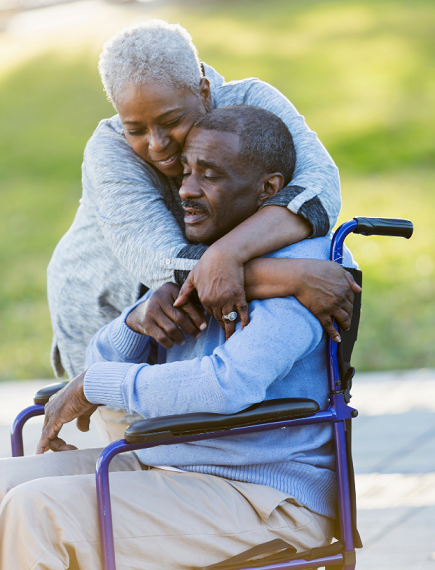
According to the World Health Organization, a stroke is a clinical syndrome consisting of rapid development of focal (at times global) disturbance of cerebral function, lasting for more than 24 hours or leading to death with no apparent cause other than that of a vascular origin.
It can be described as any injury to a blood vessel that impairs or blocks a part of the brain thereby causing injury to the brain cells due to lack of blood supply.
Studies show that about 15 million people suffer stroke worldwide every year. Of these, 5 million die, and another 5 million are permanently disabled.
In Nigeria, in every 100,000 admissions of patients over the age of 50, 26 are suffering from stroke. From the foregoing, stroke is a common cause of death and disability worldwide, therefore in this article, we highlight its types, causes, symptoms, prevention, and treatments.
1. Ischemic stroke: This occurs when a part of the brain loses blood flow. This type is most common as it accounts for 80% of all strokes.
It is further categorized into two kinds – thrombotic stroke which occurs as a result of the blood clot that forms within a blood vessel usually around fatty deposits in blood vessels and embolic stroke which happens as a result of disease of the heart or blood vessels.
2. Hemorrhagic stroke: This happens when bleeding occurs within the brain. Hemorrhagic stroke is less common as it causes 20% of all strokes.
These can be either within the brain tissues or between the coverings of the brain. It usually occurs during brain trauma as a result of car accidents,
3. There is also Partial stroke, medically called transient ischemic attack (TIA). It occurs when a person experiences similar symptoms of stroke but temporarily.
Partial or mini-stroke happens when the blood supply to the brain is temporarily reduced.
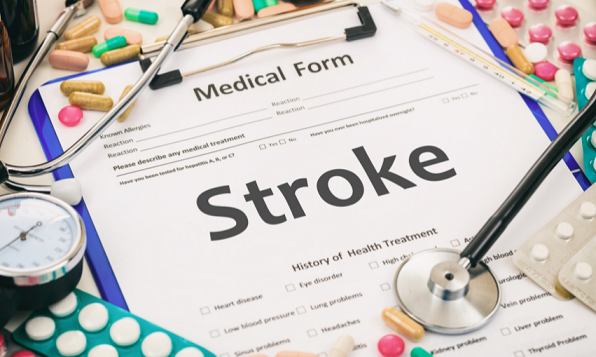
It is not unusual for the average Nigerian to have or have had an older person in the family suffering from stroke. It could be grandparents, elderly uncles, and aunts, older parents, amongst others.
Since the condition is not rare in this clime, one may then wonder what the risk factors of having a stroke include. The causes of stroke are not far-fetched from the common ailments that plague Africans and other older people around the world.
Interestingly, the African race is much more prone to stroke than any other race. From age 55 and above, common illnesses that affect Africans include Hypertension and Diabetes.
For younger people, stroke can be caused by underlying cardiovascular diseases like abnormal heart rhythm, and heart infections, high blood level and elevated lipids.
Other causes of stroke can be linked to an unhealthy consumption of large amounts of alcohol, drug abuse and indiscriminate smoking or secondary smoking. Conditions like syphilis and sickle cell anemia also make a person more prone to suffer stroke.
Also note that there can be involuntary causes of stroke like heredity and genetics. If one’s grandparents and parents suffered from stroke, there is a high likelihood that he/she may experience stroke at some point in their life too. Thus a family history of stroke can be a potential risk to a person.
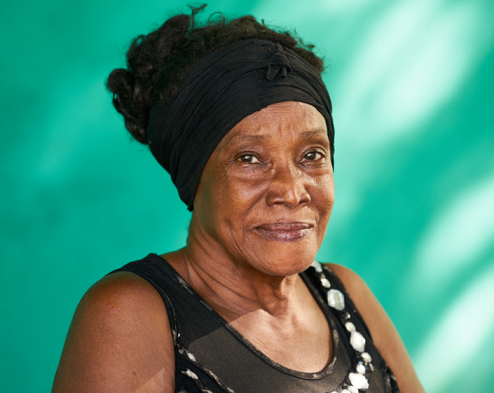
It is not easy to recognize signs of stroke. Since stroke has been earlier stated to be a medical emergency, it is important to know the signs of stroke in case of eventuality.
One has to bear in mind that stroke just like a heart attack has a sudden onset.
Well, it is possible that a lot must have gone wrong in the body system to culminate into a sudden blockage of oxygen and blood vessel to the brain, but outwardly, it can be difficult to notice until it happens.
If you happen to experience stroke or be around someone who might be having a stroke, the following are the major general symptoms to look out for:
In case of a haemorrhagic stroke, look out for other symptoms like neck stiffness, severe headache, dizziness, confusion and rapid progression to coma.
When these happen, the best point of call at the moment is to take the person to the hospital as soon as possible because prompt treatment is needed.
If you already found the person in an unconscious state, you can try to perform a cardiopulmonary resuscitation (CPR) on them to avoid them drifting away. This is done by repeatedly compressing their chest by placing both of your arms on their chest.
So many people wonder if stroke can be prevented since it almost always happens unexpectedly. Being more alert and avoiding certain lifestyle habits have been proving to help reduce the incidence of stroke. There are however, two major ways one can endeavor to prevent stroke.
It is important to pay attention to avoiding underlying ailments that may lead to a stroke. In cases where they have already manifested, ensure to treat these illnesses effectively.
For instance, look and treat risk factors such as hypertension, diabetes, elevated lipids and cardiovascular disease. This may begin with the following;
Healthy lifestyle: Living a healthy lifestyle by not drinking too much alcohol decreases the chances of having diabetes. Also staying away from junk foods can prevent diabetes and by extension, stroke.
Regular exercise: Exercising three times or more in a week helps to increase high density lipoprotein that are protective as well as enhances blood circulation to the brain.
Quit smoking: Stroke can also be prevented by quitting cigarrete smoking and staying away from secondary smoking.
Healthy diet: Maintaining a healthy diet, among many advantages, helps one to maintain a healthy weight. Eating healthy prevents obesity which in turn lowers the tendency for stroke.
When one is also managing a stroke, maybe a mini stroke, it is important to avoid subsequent strokes. This entails controlling risk factors that may cause further damage to the patient.
Prevention at this stage is usually monitored by a healthcare provider. Lowering blood pressure and cholesterol, even if not particularly raised, has been shown to be beneficial. Antiplatelet agents should be given to the patient in intervals if there is no bleeding on the computerized tomography (CT) scan. Anticoagulant medication that prevents the formation of clots should be started in patients that had a stroke as a result of atrial fibrillation. A classic example is the administration of Warfarin which can be started 2 weeks after the stroke.
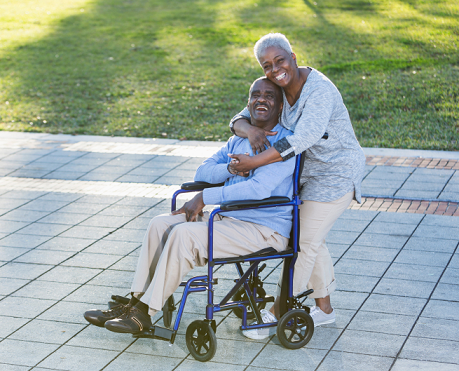
Treatment for stroke must begin with emergency measures. It usually starts with checking the patient’s airway, breathing and circulation (ABCs). The airway should be protected to avoid hypoxia/aspiration. The patient is then placed on oxygen with the head elevated at 30 degrees, and his vital signs monitored closely. Keep hydrated with intravenous fluids like saline are administered periodically to keep the patient hydrated. If the blood sugar is high, Insulin is to be given in order to maintain the blood sugar level at 90-140mg/dl. At this point, all that the patient is given to take is administered intravenously and not orally to avoid choking.
It is recommended that blood pressure above 220/120mmHg be lowered using intravenous labetalol 10-20mg over 1-2mins which can be repeated if required. Other drugs that can be used include nicardipine and nitroprusside.Thrombolysis should be considered for ischaemic stroke with the onset of symptoms less than 4-5 hours ago. Drugs used for thrombolysis include: alteplase and streptokinase. However, a systolic blood pressure greater than 185/110mm Hg is a contraindication to the use of thrombolysis.
Once haemorrhagic stroke is excluded, antiplatelet medication such as aspirin 300mg can be given. Cerebellar haematomas (collection of blood in the brain) may need urgent surgery for evacuation.
The managing team should communicate fully with the patient, the relatives, and care givers especially in cases where difficult decisions need to be made. Ideally, stroke patients are to be taken to a stroke unit with Special Nursing Care and physiotherapy to save life and help in motivating the patient. Are you dealing with a loved one with stroke? KompleteCare’s Nurses Care takes the burden of care off you by placing your loved one in the care of certified nurses and guaranteeing an all-round care for them.
In cases of stroke, telemedicine is the easier way for medical professionals with extensive training in treating strokes to treat stroke victims remotely using technology. This is significant because, following a stroke, receiving an early diagnosis and a recommended course of therapy is essential.
Telemedicine raises the likelihood that thrombolytics, treatments that dissolve blood clots, can be administered in time to lessen stroke-related impairment. The treatments have to be administered via IV within four and a half hours of the onset of stroke symptoms.
Through digital cameras, internet telecommunications, cellphones, tablets, and other technology, neurologists who can advise on the best stroke care are able to reach the individual with stroke.
The medical services you need are not farfetched; it takes just a click to consult a specialist. These stroke specialists collaborate with nearby emergency medical doctors to give a diagnosis and course of action. The stroke specialist assesses you and develops the best possible treatment plan in collaboration with your healthcare provider.
1.What is a stroke?
When blood flow to the brain is compromised, a stroke, often known as a “brain attack,” happens. Reduced blood flow and the subsequent oxygen shortage can lead to the death of brain cells.
Strokes can be broadly classified into two groups:
Most strokes suffered by individuals are majorly ischemic strokes, which are caused by blockages in blood vessels in the brain or neck.
2. What are the treatable risk factors for stroke?
Several significant modifiable risk factors for stroke include:
High blood pressure (hypertension)
The greatest significant risk factor for stroke is, without a doubt, hypertension. If your blood pressure is elevated, your doctor may advise a personalized plan to lower it to normal. Several strategies that are effective include:
Your doctor may prescribe blood pressure-lowering medication for you. Maintaining blood pressure control can also help you prevent diabetes, renal failure, and heart disease.
Smoking of cigarettes
Smoking increases the risk of hemorrhagic stroke by up to four times and the risk of ischemic stroke by roughly two times. It has been connected to the accumulation of fat (atherosclerosis) in the carotid artery, which is the primary artery in the neck that supplies blood to the brain. The most common cause of stroke is the blockage of this artery.
In addition, smoking produces carbon monoxide, which lowers the quantity of oxygen your blood can carry to the brain, increases blood pressure, and thickens and increases the risk of blood clots in your circulation. Smoking encourages the growth of aneurysms.
Heart conditions
Blood clots can occur from common cardiac conditions, such as coronary artery disease, valve abnormalities, atrial fibrillation, and enlargement of one of the heart’s chambers. These clots have the potential to break free and obstruct blood vessels in or leading to the brain.
Atrial fibrillation leads to mortality and disability and it is commonly experienced by the elderly people, while atherosclerosis is the most prevalent disease of the blood vessels and can affect anyone.
Hypertension damages the blood vessel walls mechanically and encourages atherosclerosis. In addition to treating your heart condition, your doctor might recommend aspirin or other medications that help stop blood clots from forming.
History of a stroke or transient ischemic attack (TIA)
Take immediate action to receive help if you get a TIA. Your chance of having a stroke is significantly higher than that of someone who has never experienced a TIA or stroke. Call for emergency medical attention if you exhibit stroke warning signals.
Preventing a recurrent stroke is crucial if you have already experienced one. Your brain asks the parts of your brain that are unaffected to perform two tasks, which aids in your recovery from a stroke. Thus, the severity of a second stroke may double.
Diabetes
You might believe that diabetes solely impacts the body’s capacity to utilise glucose, or sugar. However, it also results in harmful alterations to the blood vessels in every part of the body, including the brain.
Additionally, brain damage is typically more severe and extensive following a stroke if blood glucose levels are high compared to when blood glucose is well-controlled. Diabetics often have hypertension, which largely explains their elevated risk of stroke. Diabetes treatment can postpone the development of issues that raise the risk of stroke.
Obesity and lack of exercise
Diabetes, heart disease, and hypertension are linked to obesity and inactivity. A waist-to-hip ratio that is either equal to or higher than the population’s midpoint triples the risk of an ischemic stroke.
3. What are the warning signs of a stroke?
Your body will give you warning signs if it senses that your brain is not getting enough oxygen. If you see any of these indicators of a stroke, do not hesitate to contact a doctor right away.
The signs could be:
Other warning indicators that could appear are blurred or double vision, as well as sleepiness and nausea.
Occasionally, the cautionary indicators could appear for a short while before going away. Transient ischemic attacks, or TIAs, are the name for these brief occurrences that are frequently referred to as “mini-strokes.” Despite their briefness, they reveal a dangerous underlying disease that requires medical attention to resolve. Unfortunately, a lot of individuals overlook them since they become evident. Avoid it. Attending to them has the potential to save your life.
4. What are the 3 treatments for a stroke?
Stroke can be effectively treated to preserve lives and avoid long-term disability.
The suggested courses of action for a stroke treatment vary depending on the type of stroke:
While some individuals may also require surgery, the typical course of treatment includes taking one or more different medications.
How to treat ischemic strokes
It is normally advised to use a combination of medications to treat an ischemic stroke and keep it from happening again. Certain medications must be taken right away and for a limited period of time, while others might not need to be begun until the stroke has been treated and might require long-term use.
A medication called alteplase, which breaks blood clots and restores blood flow to the brain, is frequently injected to treat ischemic strokes.
The application of “clot-busting” medication is referred to as thrombolysis.
Alteplase is most effective when taken immediately after a stroke, preferably within 4.5 hours if more than 4.5 hours have elapsed; it is typically not advised because it is unclear how useful it is to utilize it after this point. It is crucial to perform a brain scan to confirm the diagnosis of an ischemic stroke before using alteplase.
This is due to the medication’s potential to exacerbate hemorrhagic stroke hemorrhage.
Thrombectomy
A thrombectomy is an emergency operation that can be used to treat a small number of severe ischemic strokes. By doing this, blood clots are removed, and blood flow to the brain is aided. Treatment with a thrombectomy is limited to ischemic strokes resulting from a thrombus in a major cerebral artery. It works best when initiated as soon as possible following a stroke.
A catheter is inserted into an artery during the surgery, frequently in the groin. A tiny gadget is inserted into the cerebral arteries via the catheter. Then, the device or suction can be used to remove the blood clot. Both local and general anesthesia are options for the surgery.
5. What is the quick treatment for a stroke?
IV medication for stroke emergencies
Receiving treatment quickly may lessen problems and increase your chances of survival. For the treatment of ischemic stroke, intravenous injection of recombinant tissue plasminogen activator (TPA) is the gold standard. Alteplase (Activase) and tenecteplase (TNKase) are the two forms of TPA. Within the first three hours of having an ischemic stroke, a TPA injection is administered through the vein. TPA may occasionally be administered up to 4.5 hours after the onset of stroke symptoms.
6. How long does a stroke last?
The symptoms of a stroke usually persist for more than a day and may or may not go away with treatment. Certain symptoms of a stroke might never go away or improve. The symptoms of a TIA pass quickly. Usually, symptoms go away in 1 to 5 minutes, but sometimes they take up to 24 hours to go away.
Harrison’s Principles of Internal Medicine; 19th Edition: Kasper; Fauci
Mayo Clinic. (2023). Stroke.
National Institute of Neurological Disorders and Stroke. (2024). Brain basics: Preventing stroke.
NHS. (2023). Treatment of Stroke.
Oxford Handbook of clinical Medicine 9th Edition: Murry Longmore; Ian. B. Wilkinson
Dr Halima Al-Mujtaba is a registrar in the department of Family Medicine, National Hospital Abuja.
NutritionFebruary 5, 2025
MedicationFebruary 5, 2025




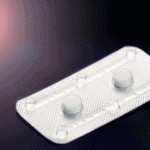
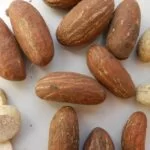
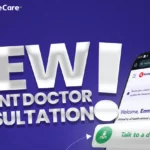


Ashley Leonard
Your blog always leaves me feeling uplifted and inspired Thank you for consistently delivering high-quality content